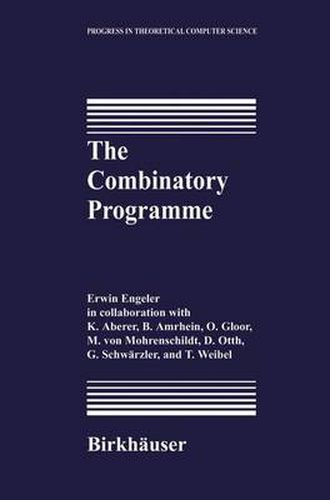Readings Newsletter
Become a Readings Member to make your shopping experience even easier.
Sign in or sign up for free!
You’re not far away from qualifying for FREE standard shipping within Australia
You’ve qualified for FREE standard shipping within Australia
The cart is loading…






This title is printed to order. This book may have been self-published. If so, we cannot guarantee the quality of the content. In the main most books will have gone through the editing process however some may not. We therefore suggest that you be aware of this before ordering this book. If in doubt check either the author or publisher’s details as we are unable to accept any returns unless they are faulty. Please contact us if you have any questions.
Combinatory logic started as a programme in the foundation of mathematics and in an historical context at a time when such endeavours attracted the most gifted among the mathematicians. This small volume arose under quite differ ent circumstances, namely within the context of reworking the mathematical foundations of computer science. I have been very lucky in finding gifted students who agreed to work with me and chose, for their Ph. D. theses, subjects that arose from my own attempts 1 to create a coherent mathematical view of these foundations. The result of this collaborative work is presented here in the hope that it does justice to the individual contributor and that the reader has a chance of judging the work as a whole. E. Engeler ETH Zurich, April 1994 lCollected in Chapter III, An Algebraization of Algorithmics, in Algorithmic Properties of Structures, Selected Papers of Erwin Engeler, World Scientific PubJ. Co. , Singapore, 1993, pp. 183-257. I Historical and Philosophical Background Erwin Engeler In the fall of 1928 a young American turned up at the Mathematical Institute of Gottingen, a mecca of mathematicians at the time; he was a young man with a dream and his name was H. B. Curry. He felt that he had the tools in hand with which to solve the problem of foundations of mathematics mice and for all. His was an approach that came to be called formalist and embodied that later became known as Combinatory Logic.
$9.00 standard shipping within Australia
FREE standard shipping within Australia for orders over $100.00
Express & International shipping calculated at checkout
This title is printed to order. This book may have been self-published. If so, we cannot guarantee the quality of the content. In the main most books will have gone through the editing process however some may not. We therefore suggest that you be aware of this before ordering this book. If in doubt check either the author or publisher’s details as we are unable to accept any returns unless they are faulty. Please contact us if you have any questions.
Combinatory logic started as a programme in the foundation of mathematics and in an historical context at a time when such endeavours attracted the most gifted among the mathematicians. This small volume arose under quite differ ent circumstances, namely within the context of reworking the mathematical foundations of computer science. I have been very lucky in finding gifted students who agreed to work with me and chose, for their Ph. D. theses, subjects that arose from my own attempts 1 to create a coherent mathematical view of these foundations. The result of this collaborative work is presented here in the hope that it does justice to the individual contributor and that the reader has a chance of judging the work as a whole. E. Engeler ETH Zurich, April 1994 lCollected in Chapter III, An Algebraization of Algorithmics, in Algorithmic Properties of Structures, Selected Papers of Erwin Engeler, World Scientific PubJ. Co. , Singapore, 1993, pp. 183-257. I Historical and Philosophical Background Erwin Engeler In the fall of 1928 a young American turned up at the Mathematical Institute of Gottingen, a mecca of mathematicians at the time; he was a young man with a dream and his name was H. B. Curry. He felt that he had the tools in hand with which to solve the problem of foundations of mathematics mice and for all. His was an approach that came to be called formalist and embodied that later became known as Combinatory Logic.